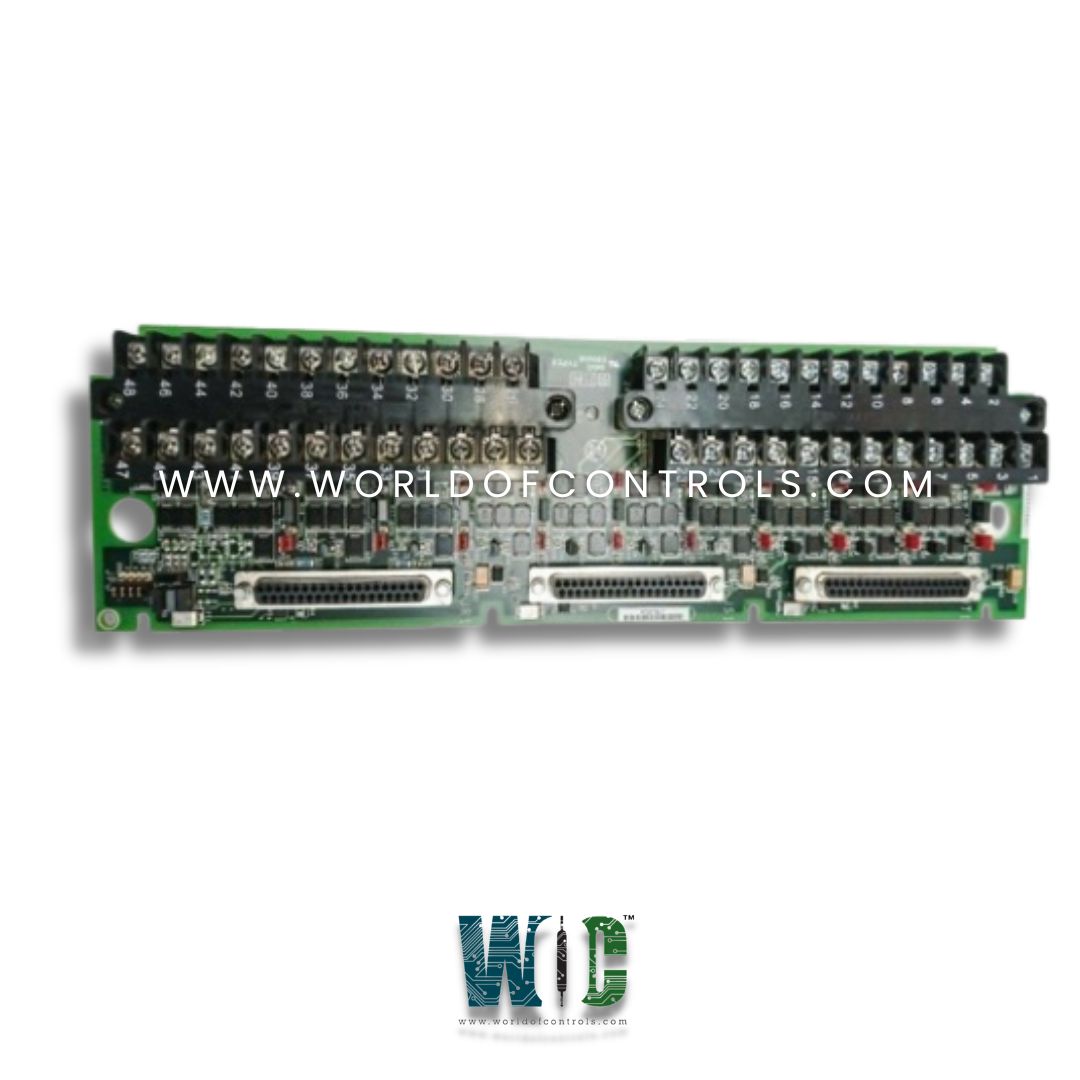SPECIFICATIONS
Part No.: IS200TBAIH1A
Manufacturer: General Electric
Country of Manufacture: United States of America (USA)
Temperature: -30 to 65oC
Size: 10.16 cm wide x 33.02 cm high
Number of channels: 12
Input span, transmitters: 1-5 V dc from 4-20 mA input
Outputs: 24 V outputs provide 21 mA each
Product Type: Analog Input/Output Board
Availability: In Stock
Series: Mark VI
Functional Description
IS200TBAIH1A is an Analog Input/Output Board developed by GE. It is part of Mark VI series. It is an integral component designed to facilitate analog input and output functionalities within the system. It accommodates various configurations and options tailored to different application scenarios. In Triple Modular Redundancy (TMR) applications, the input signals undergo a specific process to ensure redundancy and reliability. In TMR applications, input signals are distributed or fanned to three separate connectors, corresponding to the R, S, and T controls. This distribution ensures redundancy and fault tolerance by providing multiple pathways for signal transmission.
Product Features
- TMR Output Operation: The TMR outputs function by combining the current outputs of the three connected output drivers. These output drivers are typically associated with each of the R, S, and T control connectors. By combining the outputs, redundancy is achieved, allowing the system to continue operating even if one of the output drivers fails or malfunctions.
- Total Current Measurement: To ensure accuracy and reliability, the total current output is determined by measuring the combined current from the three connected output drivers. This measurement is performed using a measuring shunt located. The shunt allows for measurement of the total current flowing through the system.
- Presentation of Total Current Signal: Once the total current is measured, the TBAI presents this signal to the electronic control system for further processing. The electronic control system regulates the total current signal to match the commanded setpoint. This regulation ensures that the system operates within specified parameters, maintaining stability and optimal performance.
- Connectors and Application Support: The module incorporates three DC-37 pin connectors specifically designated for VAICs (Variable Analog Input Cards). For simplex applications, a single connector (JR1) suffices. However, in Triple Modular Redundancy (TMR) setups, all three connectors are utilized to support the system.
Functionality in TMR Applications
- In TMR applications, input signals are distributed among the three connectors, with each connector individually handling R, S, and T controls.
- The TMR outputs amalgamate the currents from the connected output drivers, determining the total current through a measuring shunt. This cumulative current signal is then presented to the VAICs for regulation based on the commanded setpoint.
Analog I/O Capabilities and Configuration
- TBAI serves as a power source, providing a 24 V DC power supply for all transducers within the system.
- Its inputs are configurable to operate as either current or voltage inputs through the utilization of jumpers. Furthermore, one of the two analog output circuits supports 4-20 mA output, while the other can be configured as either 4-20 mA or 0-200 mA, offering versatility in output configurations.
Noise Suppression and Filtering Capabilities
- Equipped with noise suppression and filtering mechanisms, the TBAI module ensures a high Common Mode Rejection (CMR) to mitigate interference.
- It maintains a 60 dB CMR for input AC signals and an 80 dB CMR for DC signals, enhancing signal clarity and accuracy.
Power Output and Diagnostics
- Each 24 V DC power output is designed to deliver 21 mA consistently and is safeguarded against short-circuit operation. Transmitters and transducers within the control system can utilize this power source or be independently powered. Diagnostics within the module actively monitor each output and, in case of a persistent fault unresolvable by processor commands, a suicide relay in the VAIC disconnects the corresponding output, ensuring system safety and stability.
- The TBAI module offers robust support, flexibility, and monitoring capabilities for various applications within the control system.
The WOC team is always available to help you with your Mark VI requirements. For more information, please contact WOC.
Frequently Asked Questions
What is IS200TBAIH1A?
It is an Analog Input/Output Board developed by GE under the Mark VI series.
How are analog inputs managed within a Triple Modular Redundancy (TMR) system?
In a TMR system, analog inputs are distributed to the three VAICs (Variable Analog Input Cards) present within the system.
How is the 24 V DC power supplied to the transducers in a TMR setup?
The 24 V DC power required for the transducers is supplied collectively from all three VAICs, and this power is diode-shared on the TBAI module.
How are the analog current outputs managed within the TMR system?
Each analog current output is influenced by currents sourced from all three VAICs. The actual output current is measured through a series resistor, which generates a corresponding voltage fed back to each VAIC.
What is the mechanism for determining the final output current in a TMR configuration?
The TBAI employs a unique mechanism for determining the output current within a TMR setup. A series resistor measures the actual output current, producing a voltage feedback to each VAIC. The resulting output is the median value of the three currents, which is the voted middle value among the outputs.
